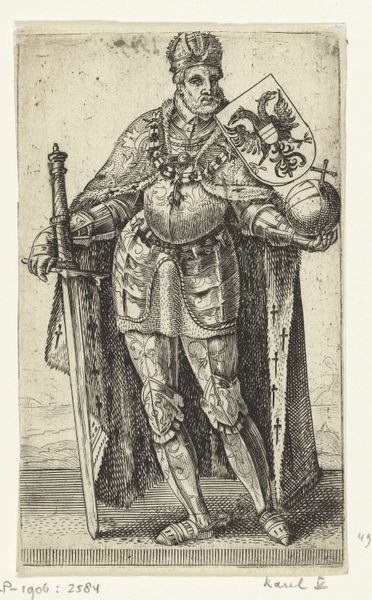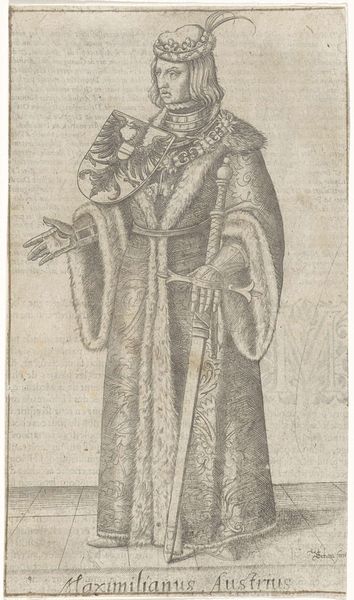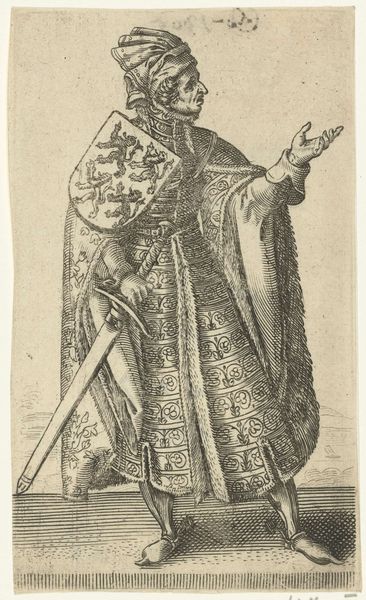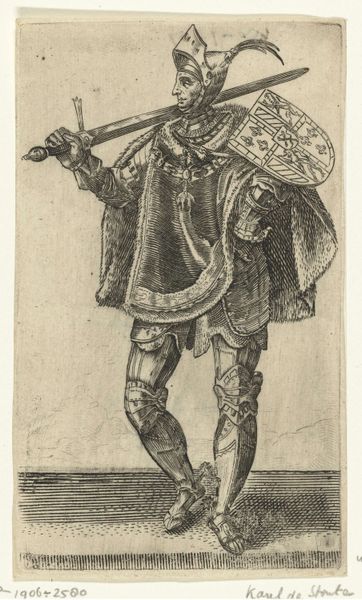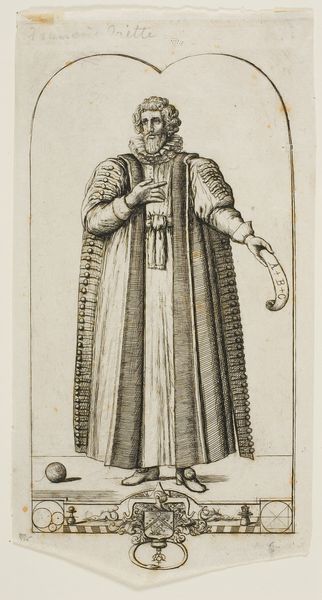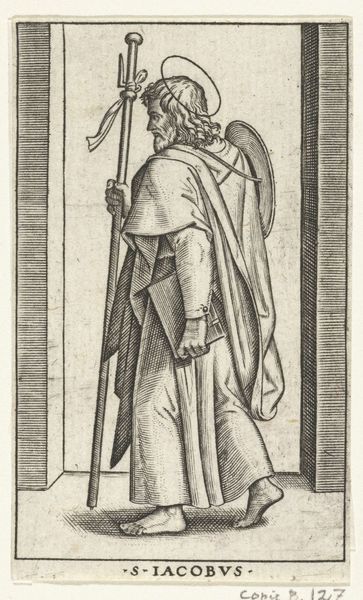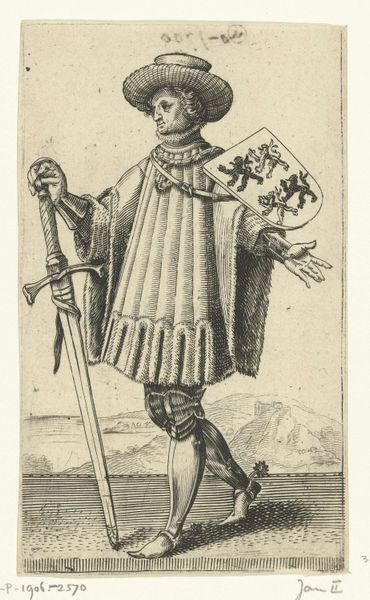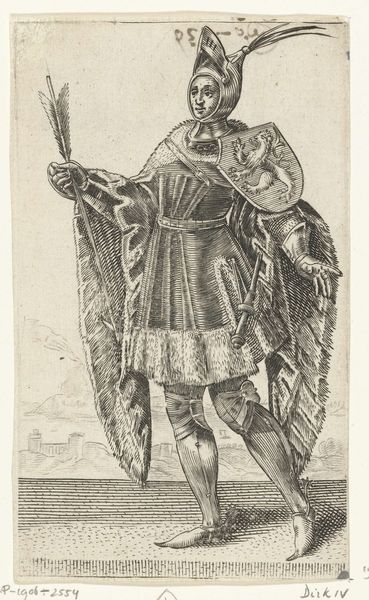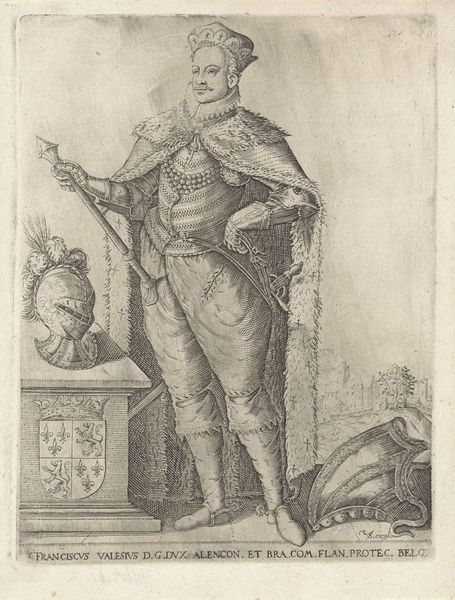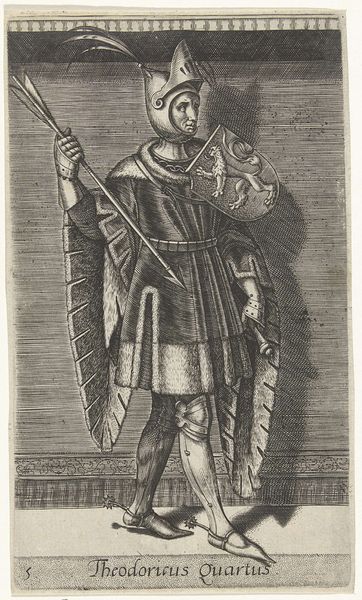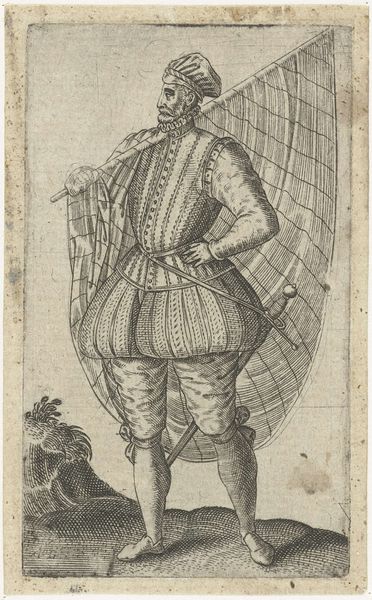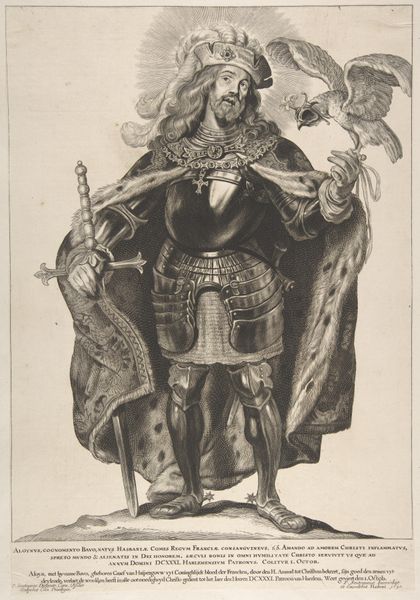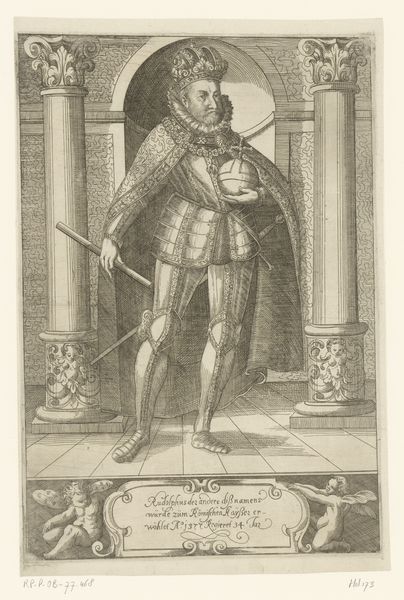
print, intaglio, engraving
#
portrait
#
baroque
# print
#
intaglio
#
old engraving style
#
pen-ink sketch
#
history-painting
#
engraving
Dimensions: height 130 mm, width 80 mm
Copyright: Rijks Museum: Open Domain
Curator: Here we have Adriaen Matham's 1620 engraving, “Portret van Maximiliaan I van Habsburg, Rooms-Duits keizer,” or "Portrait of Maximilian I of Habsburg, Holy Roman Emperor." The artwork employs an intaglio printmaking method and resides here at the Rijksmuseum. Editor: The meticulousness is striking! The engraving elicits a somber, dignified aura befitting an emperor, although I’m finding that this sentiment of reverence may come from the formal arrangement of line, mass and value. The image space is arranged almost completely symmetrical to heighten a sense of hierarchical power, while thin delicate lines establish value ranges for a greater contrast effect. I wonder what the relationship between line, space and social meaning here might tell us… Curator: Absolutely! This print offers a glimpse into the ways rulers cultivated their image. Maximilian I, though deceased over a century prior, remained a potent symbol. Consider how his image, perpetuated through prints like this, served to bolster the Habsburg dynasty’s legitimacy, echoing the grandeur of a bygone era. Editor: True. So, we can read this less as an exact likeness, and more as a carefully constructed representation. Take his regal garb— the armor, fur robes, crown. They function as signs. They’re indices and symbolic signifiers operating together here to form a potent display of power. Even the composition with a shield, a scepter and the Habsburg eagle works as a part of an iconographic repertoire meant to shape viewers perceptions. Curator: Indeed, printmaking allowed for wide dissemination of these images. It’s a crucial medium for understanding the construction of historical narratives. This was long before photography or the internet— engravings such as this shaped public perceptions. Editor: Viewing Matham's work now, I am struck how such lines and calculated formal construction were intended to perpetuate power structures and legitimize their claims across long stretches of time. Curator: Considering its intricate details and historical importance, this portrait offers compelling insight into the era's political and artistic sensibilities.
Comments
No comments
Be the first to comment and join the conversation on the ultimate creative platform.

